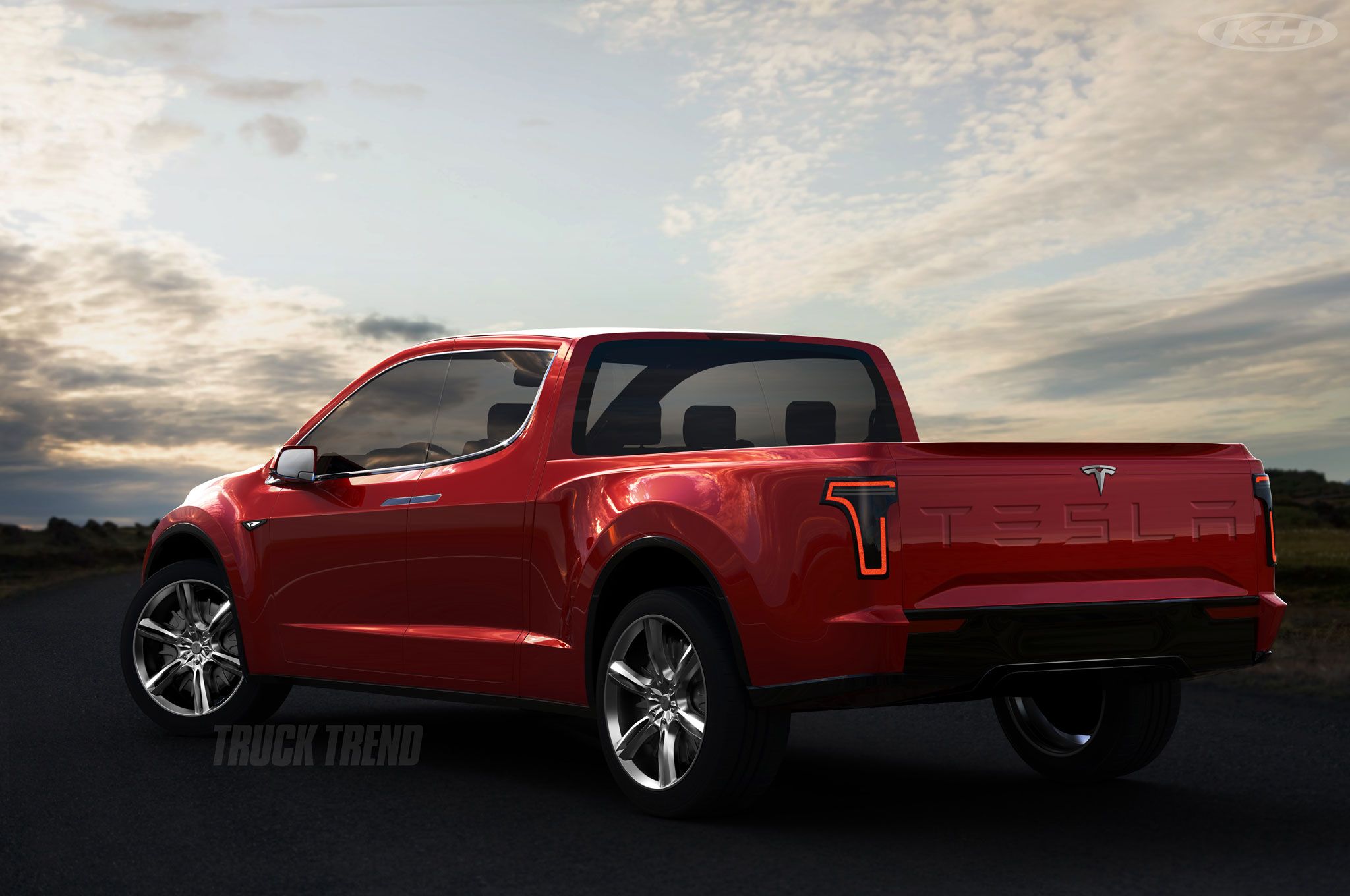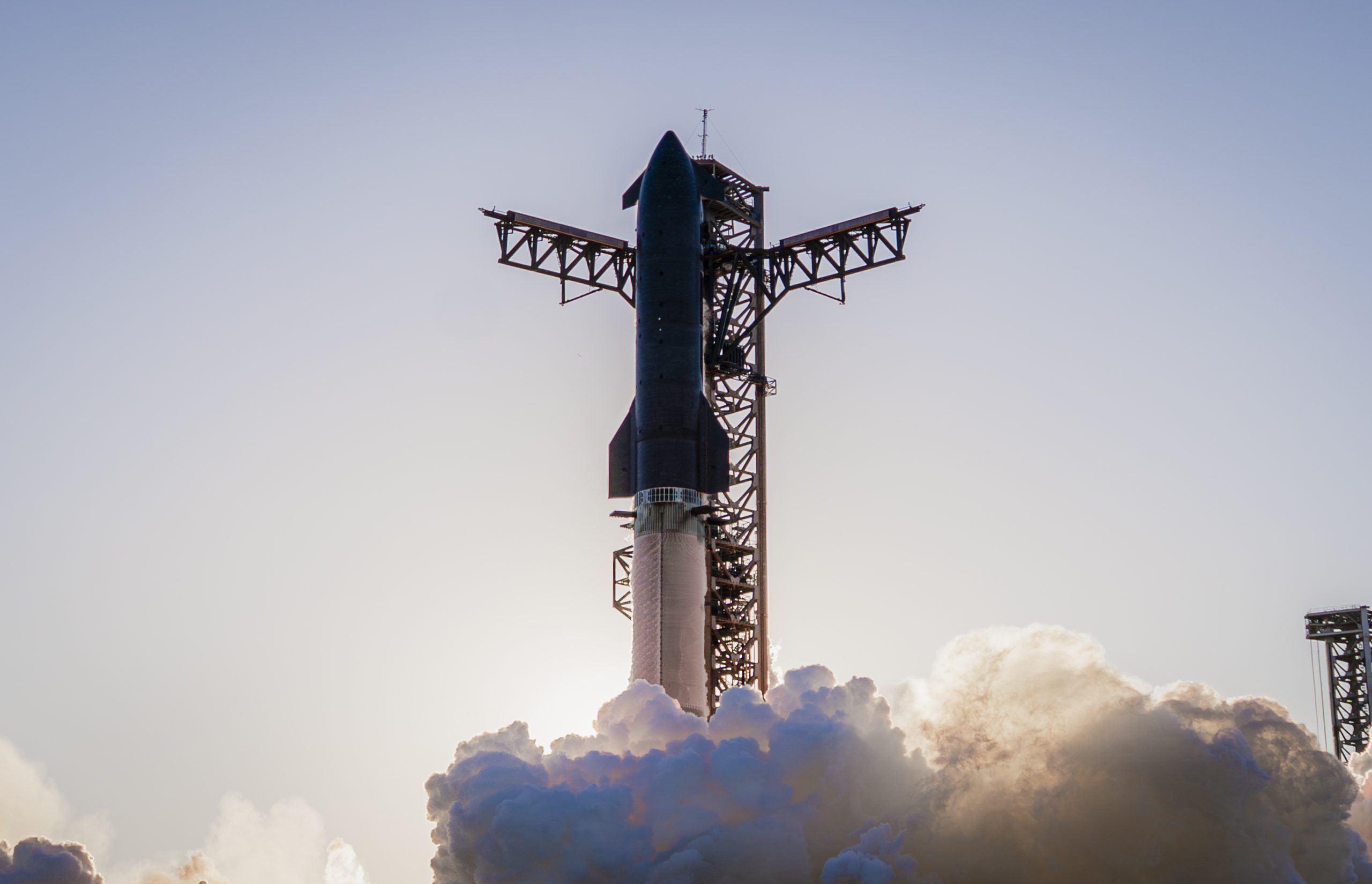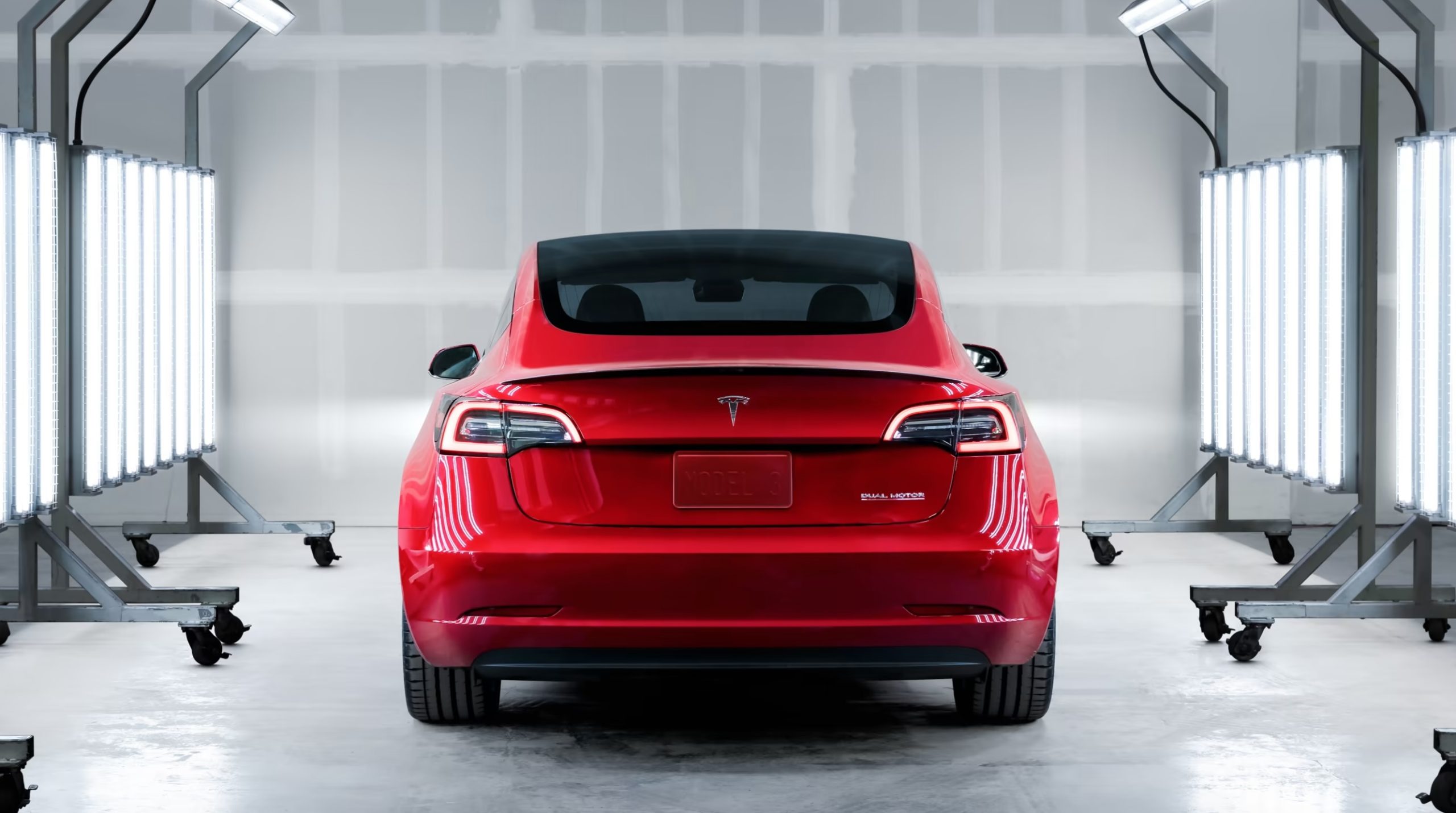News
Adoption of Tesla’s electric truck will be driven by regulation

It’s expected that the commercial trucking industry will begin to transform in the same way that the passenger automotive industry has. Fuel efficiency has become a new priority and electrification is now the go-to plan for achieving higher MPGs in heavy trucking. In much the same way that regulations pushed trucking towards lower pollution at the expense of efficiency in the 1970s, today’s trucking paradigm is seeing a push for more efficiency. At what expense?
A new report from Ravi Shanker at Morgan Stanley urges investors to consider electric and self-driving commercial trucking as an opportunity. Shanker says that regulations and economics will drive the industry towards electrification and autonomous technologies. The analyst says that this could happen as early as 2020, which is when new federal fuel economy regulations on heavy-duty vehicles begin to really gather steam. Although efficiency gains will be had with electrification and self-driving, Shanker makes it clear that this will be secondary to the demand created by regulatory pressure.
As usual, we look to California for a glimpse of what could be coming. California’s Sustainable Freight Action Plan calls for 100,000+ zero-emissions trucks to be on the road by 2030 in that state. There is debate as to whether this plan is realistic, but federal standards are also playing a large role. The U.S. Environmental Protection Agency (EPA) and the National Highway Traffic Safety Administration (part of the federal Department of Transportation) have proposed emissions and fuel economy standards for heavy-duty vehicles. The first of these began with the 2014 model year.
For our purposes, the regulations affecting “combination tractors” (aka “tractor-trailer” or “18 wheeler”) models are pertinent. The 2018 standards are relatively loose and most in the industry believe they are achievable, but the EPA and NHTSA have proposed further standards to begin in 2021, with incremental increases thereafter through to 2027. The goals are largely aimed towards lower CO2 emissions with reductions of about four percent (depending on the vehicle type) being the goal. The reduction is not the issue with industry insiders, however, it’s the test cycle to be used, which some argue is less realistic and which disfavors other emissions that also have requirements to be met. This Phase 2 of the federal efficiency standards for heavy trucks is not yet finalized, but will very likely be the driving force behind national changes in trucks.
Equating these changes into standard numbers that the general public would understand is difficult. Heavy-duty trucks can range in fuel efficiency from 20 mpg or better down to 2-3 mpg. For most tractor-trailer combinations, MPG averages of 4-9 mpg are the norm, depending on load, tractor type, and area of operation. Most analysts calculate efficiency using fuel use in tons per mile with a relatively long distance (100-500 miles) being the average. Using this method, for example, in my time driving a tractor pulling a refrigerated trailer across all 48 states, my fuel economy average was about average for that sector of the industry at roughly 60 ton-miles per gallon. Today, these numbers are slightly higher, according to the latest U.S. Transportation Energy book. Using this method of calculation, a 2015 Toyota Prius is about a third as efficient at moving freight as was my truck.
This doesn’t mean there isn’t room for improvement, of course. There are more companies than Tesla working towards deleting the smoke stacks from big trucks.
In Europe, Volvo trucks is working hard towards a zero-emissions (at the tailpipe anyway) trucking solution with several approaches being tested. An overhead tram-like charging system has been deployed for a short stretch of highway in Sweden, aiming to improve plug-in trucks’ range in EV mode. Short-haul battery electrics and two different versions of autonomous (or semi-autonomous) systems are also being tested.
Here in the States, Volvo’s Mack Trucks is working on a handful of electrification options for heavy-duty drivetrains. So is Daimler (Freightliner, Western Star in the U.S.). Startups like Nikola also have eyes on this electric trucking future. Other startups have hoped to get into the mix as well, but the failure rate is high with companies like Smith Electric, Vision Industries, and Boulder Electric having designed and marketed innovative commercial truck options that ultimately never caught on.
Meanwhile, the largest maker of electric heavy vehicles is Chinese maker BYD, who branched out from making gadget batteries into building electric buses, trucks, and more. They are currently filling contracts internationally for buses and trucks in places as disparate at California, Malaysia, and Europe. BYD builds battery-electric, hydrogen fuel cell electric, plug-in hybrid, and hybrid drivetrains and machines for several commercial market sectors.
So we can guarantee that changes to the trucking industry are coming, but no one can say how fast or how much change that will be. Current federal regulations will drive the industry forward until 2018 and it’s likely that new standards will be in place to keep carrying change forward after that. California’s ambitious plans for adopting electric trucks will be largely regulation and incentive driven, but that has down sides as well. Many of the startups we’ve seen who’ve created electrified big rigs or delivery trucks ultimately failed when the incentives began to dry up.
For Tesla, this could mean that the financial case for the Tesla Semi will need to be more economics-based and less dependent on single market, incentives-based plans. This means that Elon and Co should be looking beyond California and it’s 100,000 vehicle plans into a broader market. We’ll discuss the potential economic case for a Tesla Semi in a future editorial.

Elon Musk
SpaceX maintains unbelievable Starship target despite Booster 18 incident
It appears that it will take more than an anomaly to stop SpaceX’s march towards Starship V3’s refinement.

SpaceX recently shared an incredibly ambitious and bold update about Starship V3’s 12th test flight.
Despite the anomaly that damaged Booster 18, SpaceX maintained that it was still following its plans for the upgraded spacecraft and booster for the coming months. Needless to say, it appears that it will take more than an anomaly to stop SpaceX’s march towards Starship V3’s refinement.
Starship V3 is still on a rapid development path
SpaceX’s update was posted through the private space company’s official account on social media platform X. As per the company, “the Starbase team plans to have the next Super Heavy booster stacked in December, which puts it on pace with the test schedule planned for the first Starship V3 vehicle and associated ground systems.”
SpaceX then announced that Starship V3’s maiden flight is still expected to happen early next year. “Starship’s twelfth flight test remains targeted for the first quarter of 2026,” the company wrote in its post on X.
Elon Musk mentioned a similar timeline on X earlier this year. In the lead up to Starshp Flight 11, which proved flawless, Musk stated that “Starship V3 is a massive upgrade from the current V2 and should be through production and testing by end of year, with heavy flight activity next year.” Musk has also mentioned that Starship V3 should be good enough to use for initial Mars missions.
Booster 18 failure not slowing Starship V3’s schedule
SpaceX’s bold update came after Booster 18 experienced a major anomaly during gas system pressure testing at SpaceX’s Massey facility in Starbase, Texas. SpaceX confirmed in a post on X that no propellant was loaded, no engines were installed, and personnel were positioned at a safe distance when the booster’s lower section crumpled, resulting in no injuries.
Still, livestream footage showed significant damage around the liquid oxygen tank area of Booster 18, leading observers to speculate that the booster was a total loss. Booster 18 was among the earliest vehicles in the Starship V3 series, making the failure notable. Despite the setback, Starship V3’s development plans appear unchanged, with SpaceX pushing ahead of its Q1 2026 test flight target.
News
Tesla Sweden faces fresh union blockade at key Gothenburg paint shop
Allround Lack works with painting and damage repair of passenger cars, including Teslas.

Tesla’s ongoing labor conflict in Sweden escalated again as the trade union IF Metall issued a new blockade halting all Tesla paintwork at Allround Lack in Gothenburg.
Allround Lack works with painting and damage repair of passenger cars, including Teslas. It currently employs about 20 employees.
Yet another blockade against Tesla Sweden
IF Metall’s latest notice ordered a full work stoppage for all Tesla-related activity at Allround Lack. With the blockade in place, paint jobs on Tesla-owned vehicles, factory-warranty repairs, and transport-damage fixes, will be effectively frozen, as noted in a report from Dagens Arbete. While Allround Lack is a small paint shop, its work with Tesla means that the blockade would add challenges to the company’s operations in Sweden, at least to some degree.
Paint shop blockades have been a recurring tool in the longstanding conflict. The first appeared in late 2023, when repair shops were barred from servicing Tesla vehicles. Days later, the Painters’ Union implemented a nationwide halt on Tesla paint work across more than 100 shops. Since then, a steady stream of workshops has been pulled into the conflict.
Earlier blockades faced backlash from consumers
The sweeping effects of the early blockades drew criticism from industry groups and consumers. Employers and industry organization Transportföretagen stated that the strikes harmed numerous workshops across Sweden, with about 10 of its members losing about 50% of their revenue.
Private owners also expressed their objections. Tibor Blomhäll, chairman of Tesla Club Sweden, told DA in a previous statement that the blockades from IF Metall gave the impression that the union was specifically attacking consumers. “If I get parking damage to my car, I pay for the paint myself. The company Tesla is not involved in that deal at all. So many people felt singled out, almost stigmatized. What have I done as a private individual to get a union against me?” Blomhäll stated.
In response to these complaints, IF Metall introduced exemptions, allowing severely damaged vehicles to be repaired. The union later reopened access for private owners at workshops with collective agreements. The blockades at the workshops were also reformulated to only apply to work that is “ordered by Tesla on Tesla’s own cars, as well as work covered by factory warranties and transport damage on Tesla cars.”
News
Tesla breaks Norway’s all-time annual sales record with one month to spare
With November alone delivering 4,260 new registrations, Tesla has cemented its most dominant year ever in one of Europe’s most mature EV markets.

Tesla shattered Norway’s decade-old annual sales record this month, overtaking Volkswagen’s long-standing milestone with over one month still left in the year. Backed by surging demand ahead of Norway’s upcoming VAT changes, Tesla has already registered 26,666 vehicles year-to-date, surpassing Volkswagen’s 2016 record of 26,572 units.
With November alone delivering 4,260 new registrations month-to-date, Tesla has cemented its most dominant year ever in one of Europe’s most mature EV markets.
Model Y drives historic surge in Norway
Tesla’s impressive momentum has been led overwhelmingly by the Model Y, which accounted for 21,517 of Norway’s registrations this year, as noted in a CarUp report, citing data from Elbil Statistik. The Model 3 followed with 5,087 units, while the Model S and Model X contributed 30 and 19 vehicles, respectively. Even the parallel-imported Cybertruck made the charts with 13 registrations.
Demand intensified sharply through autumn as Norwegian buyers rushed to secure deliveries before the country’s VAT changes take effect in January. The new regulation is expected to add roughly NOK 50,000 to the price of a Model Y, prompting a wave of early purchases that helped lift Tesla beyond the previous all-time record well before year-end.
With December still ahead, Tesla is positioned to extend its historic lead further. Needless to say, it appears that Norway will prove to be one of Tesla’s strongest markets in Europe.
FSD could be a notable demand driver in 2026
What’s especially interesting about Tesla’s feat in Norway is that the company’s biggest selling point today, Full Self-Driving (Supervised), is not yet available there. Tesla, however, recently noted in a post on X that the Dutch regulator RDW has reportedly committed to issuing a Netherlands national approval for FSD (Supervised) in February 2026.
The RDW posted a response to Tesla’s post, clarifying the February 2026 target but stating that FSD’s approval is not assured yet. “The RDW has drawn up a schedule with Tesla in which Tesla is expected to be able to demonstrate that FSD Supervised meets the requirements in February 2026. RDW and Tesla know what efforts need to be made to make a decision on this in February. Whether the schedule will be met remains to be seen in the coming period,” the RDW wrote in a post on its official wesbite.
If FSD (Supervised) does get approved next year, Tesla’s vehicles could gain a notable advantage over competitors, as they would be the only vehicles on the market capable of driving themselves on both inner-city streets and highways with practically no driver input.








